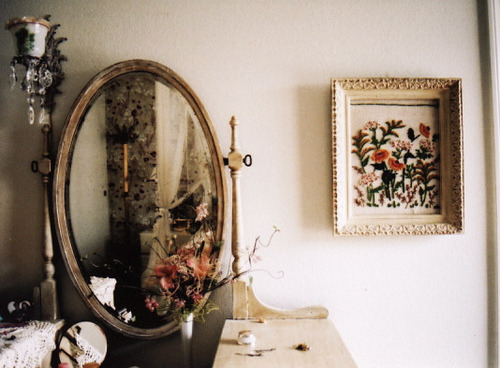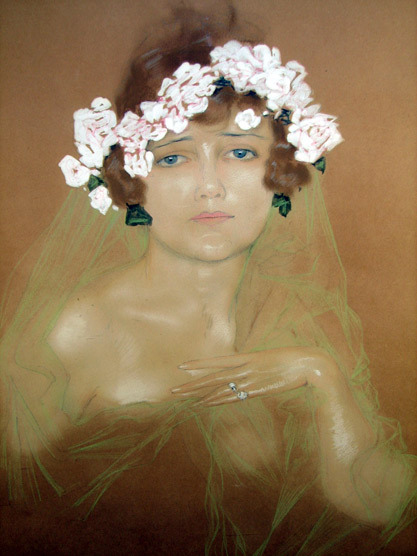“The days are short and nights are dark and long,
and this is the month for love.
Do not quarrel and turn away from me,
and leave me not this month of Pausha.”
 Lovers on Bed, opaque watercolour on paper, Kangra, c. 1780-1790
Lovers on Bed, opaque watercolour on paper, Kangra, c. 1780-1790
In Indian miniature paintings the lovers are always waiting, yearning, pining, dreaming, suffering. The beautiful heroines such as Utka Nayika are anxiously waiting for their lovers, or, like Abhisarika Nayika, all dressed up and walking through a dark forest to meet her lover. When I discovered the Kangra paintings last year I was completely enthralled by the beautiful representations of love. In these Indian miniature paintings I found what I was seeking all along; all the subtle beauties and nuances of love – fifty, and more, shades of love. No other art movement or school portrays love in such an intricate manner.
There are many Kangra paintings that I love and I discover my new favourites all the time, but at the moment the painting “Lovers on Bed” from the late eighteenth century is my favourite. When we think of a perfect setting or season for love, we might think of warmth, spring or summer, flowers, gardens, and parks, the kind that we see in paintings of Fragonard or Boucher. A land of love might equal the land of eternal summer. And yet Keshav Das speaks of the winter month of Pausha as “the month for love”. There is a delightful sense of coziness about winter that summer, despite all its beauty and magic, simply doesn’t have. And indeed, in these cold winter days there is nothing better to do than to cuddle up to your beloved under a blanket, gaze at the moon perhaps or, better yet, gaze into each other’s eyes. And this is exactly what the lovers in this miniature painting are doing. In this Kangra watercolour, “Lovers on Bed”, the lovers are united at last! No more yearning, uncertainty, anxious waiting or walking through a dark snake-filled forest to meet your beloved, why, he is right here, under the blanket with you. The painting shows a sweet, intimate moment between two lovers on a winter night. The woman is offering the man – her man – paan, while he is covering them both in a warm yellow blanket. Despite the simplicity of the scene, the simple background and also the simple gesture between lovers, still so much warmth and love and a sense of a quiet, secure joy is conveyed. Truly, no words, no adornments, no other visual elements in the painting are needed to express the beauty of the love they are feeling. Yesterday was the night of the full moon and even though a new month had therefore begun in the Hindi calender, these verses by the poet Keshav Das describing the month of Pausha, the winter month that had just passed, are very fitting for the scene in the painting:
“Anything cold in the month of Pausha,
food, water, house, or dress,
Is liked by none anywhere.
Cold are the earth and the sky,
and the rich and poor all alike
Want sunshine, massage, betel, fire,
company of women, and warm clothes.
The days are short and nights are dark and long,
and this is the month for love.
Do not quarrel and turn away from me,
and leave me not this month of Pausha.”

The full painting.
Tags: 1780, 1790, 18th century art, bed, India, Indian art, Kangra, Keshav Das, love, lovers, miniature painting, month for love, Painting, Pausha, poet, Poetry, watercolour, winter


 Picture found here.
Picture found here.











































































































